With the new house, an order placed for a 6' x 3' x 6' aviary, its immanent arrival and a reshuffle of which birds are in which cages, the 4 Cherry Finches will end up with a flight cage designed comfortably for 6 finches, so we decided we would buy 2 female Cherry Finches for Petra and Cassie. Luckily our local store had some female Fawn Cherry Finches so we bought 2 of them, and they look gorge
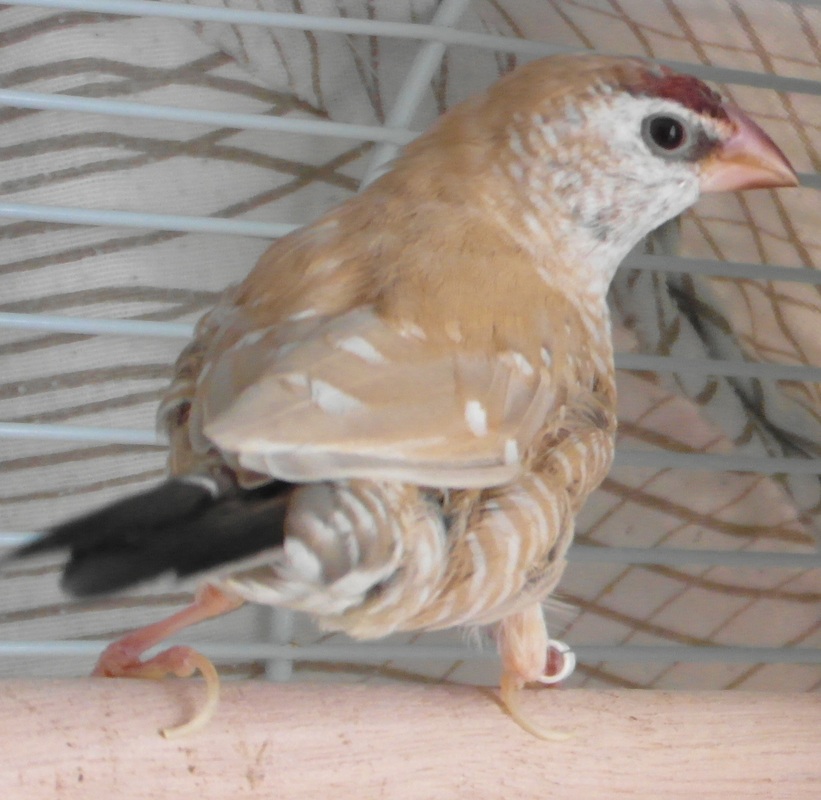
Female Fawn Cherry Finch 1
|
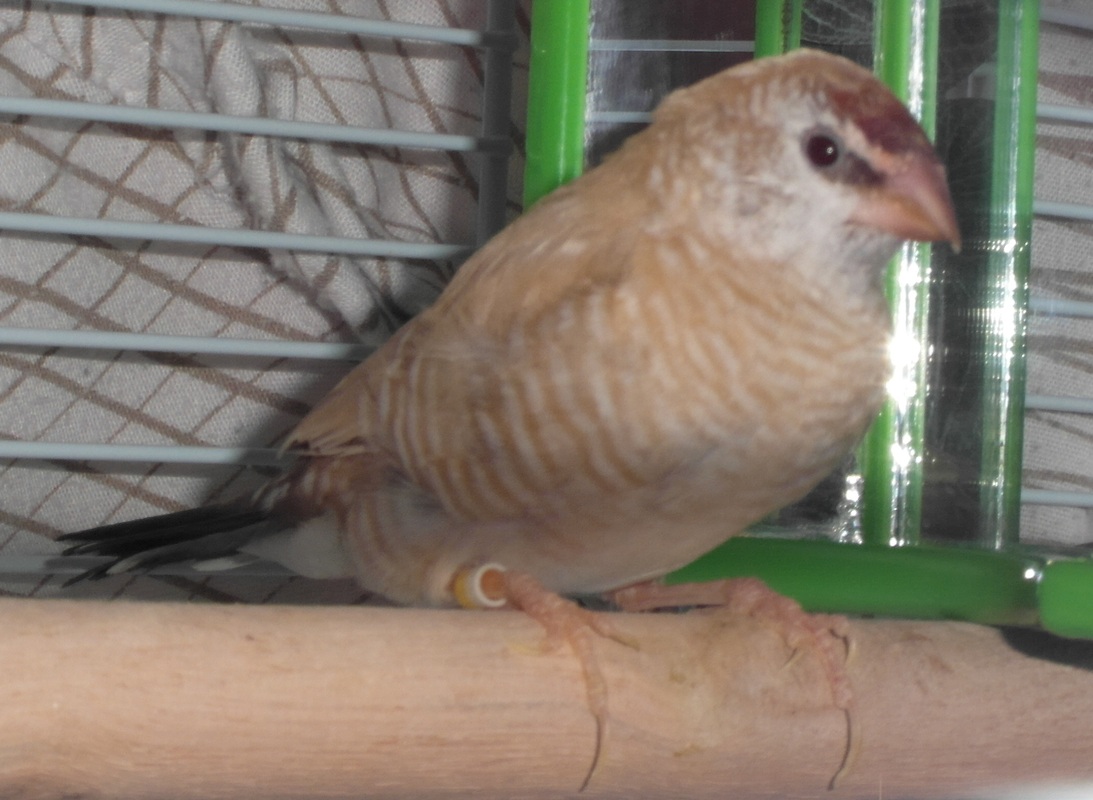
Female Fawn Cherry Finch 2
|
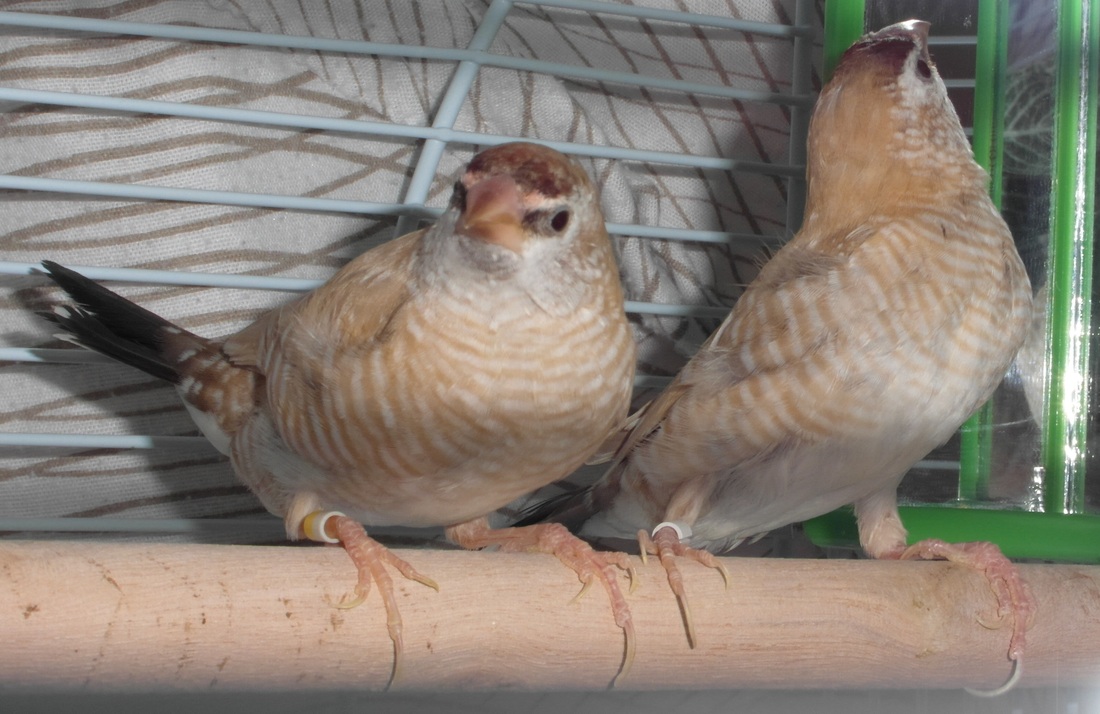
Female Fawn Cherry Finches together
Luckily both Fawn Cherry Finches already have leg bands (one is white while the other is white and yellow), so hopefully we will give them names and have their profiles on the website soon.
This week we moved home, and today the finches got moved to the new property as well. We put the Bengalese finches together in the large bared cage as we did not want to transport them in the metal flight cages. But Theodore, who normally stays in the bared cage with the Cherry finches, took advantage of the fact that the other Bengalese finches were in unknown territory, and was singing and sneak mounting several of the females.
They are all back in their normal cages now, apart from Theodore and Peppi who have been moved from the bared cage with the Cherries, to the Flight cage with Luna, Apollo and their children.
As part of the new house, we plan on getting the Bengalese finches a 6’ x 3’ x 6’ indoor aviary, which we hope to order soon once we have decided which one to get. We plan on updating the website more often now that most of the hassle of buying our first house is out of the way.
Sadly there have not been many updates this month, but we have been quite busy, and hopefully we will have some great news soon! So in the mean time, enjoy images of our Zebra finches grooming each other.
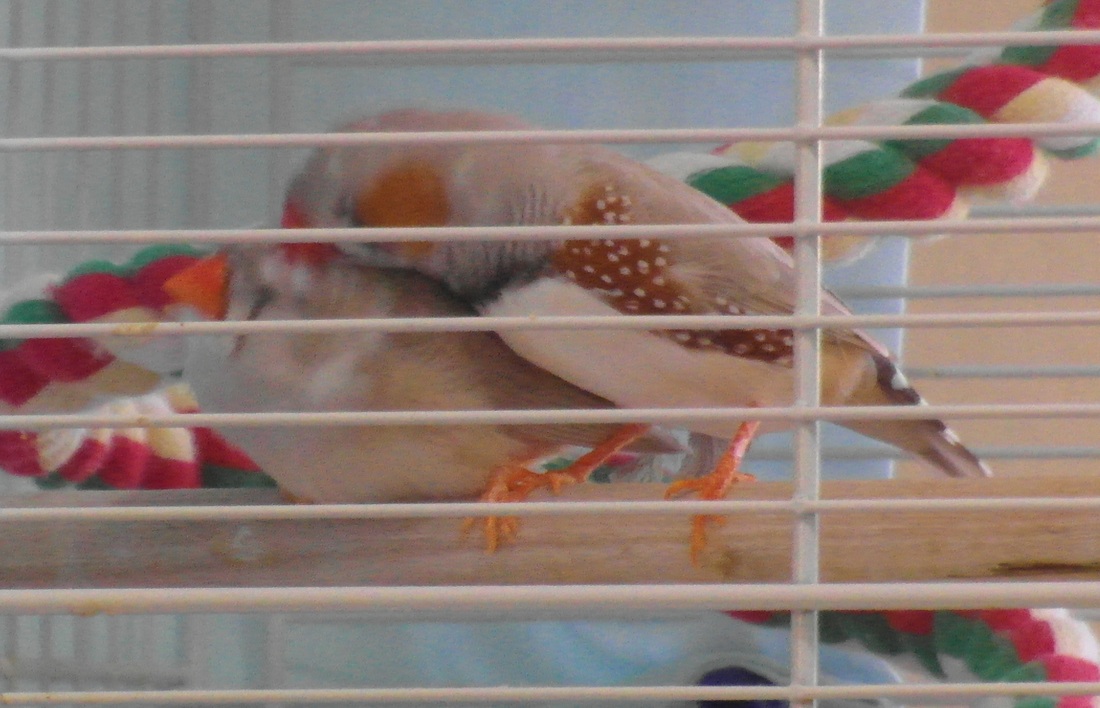
Zebra Finches Preening
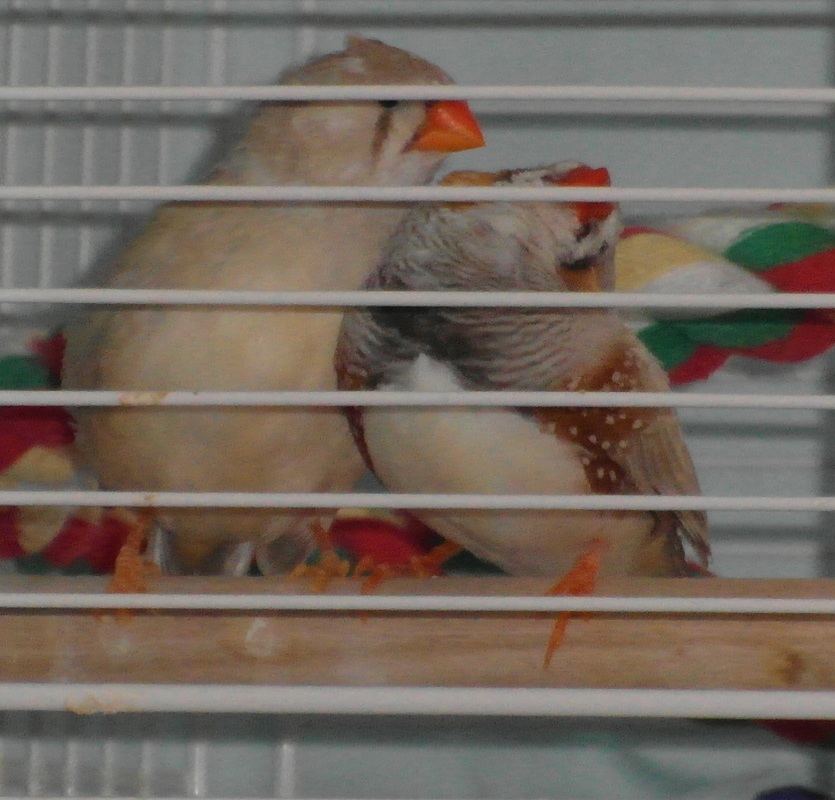
Zebra Finches Preening
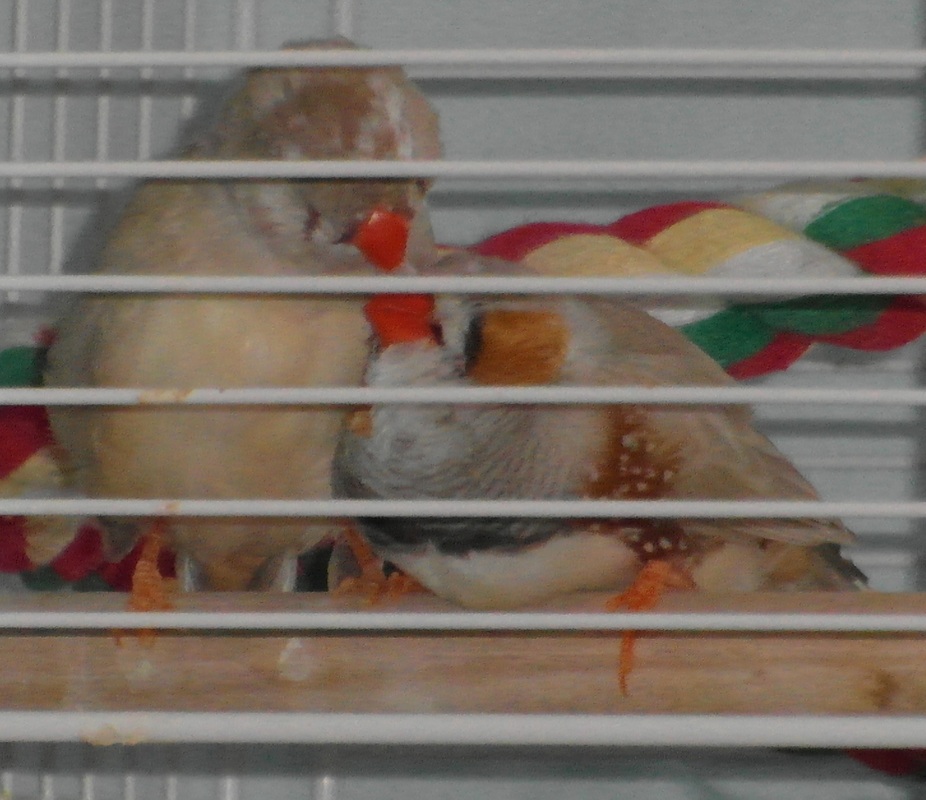
Zebra Finches Preening
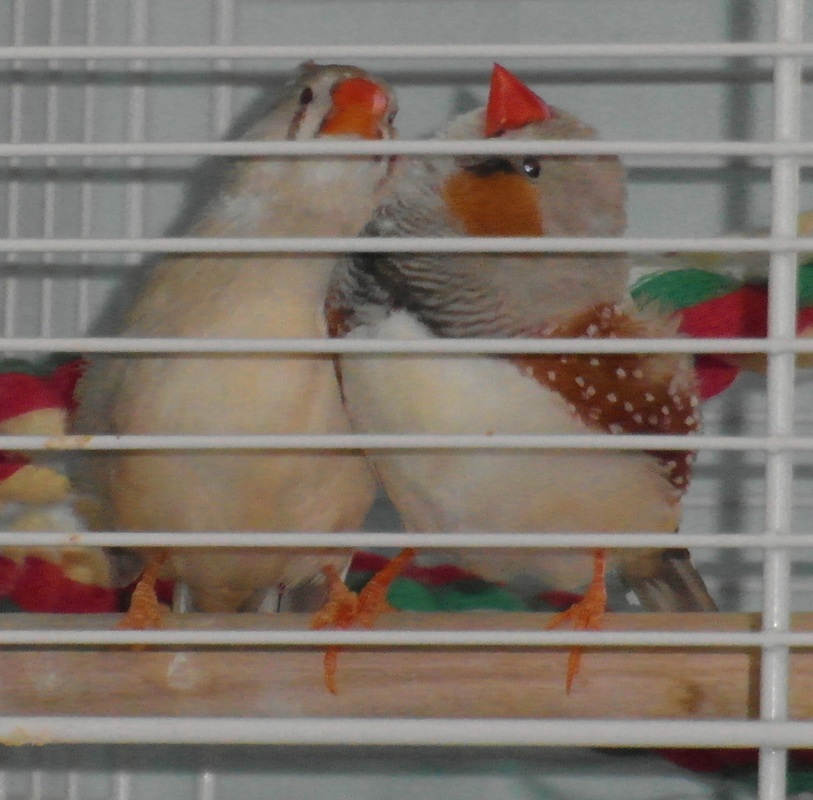
Zebra Finches Preening
|
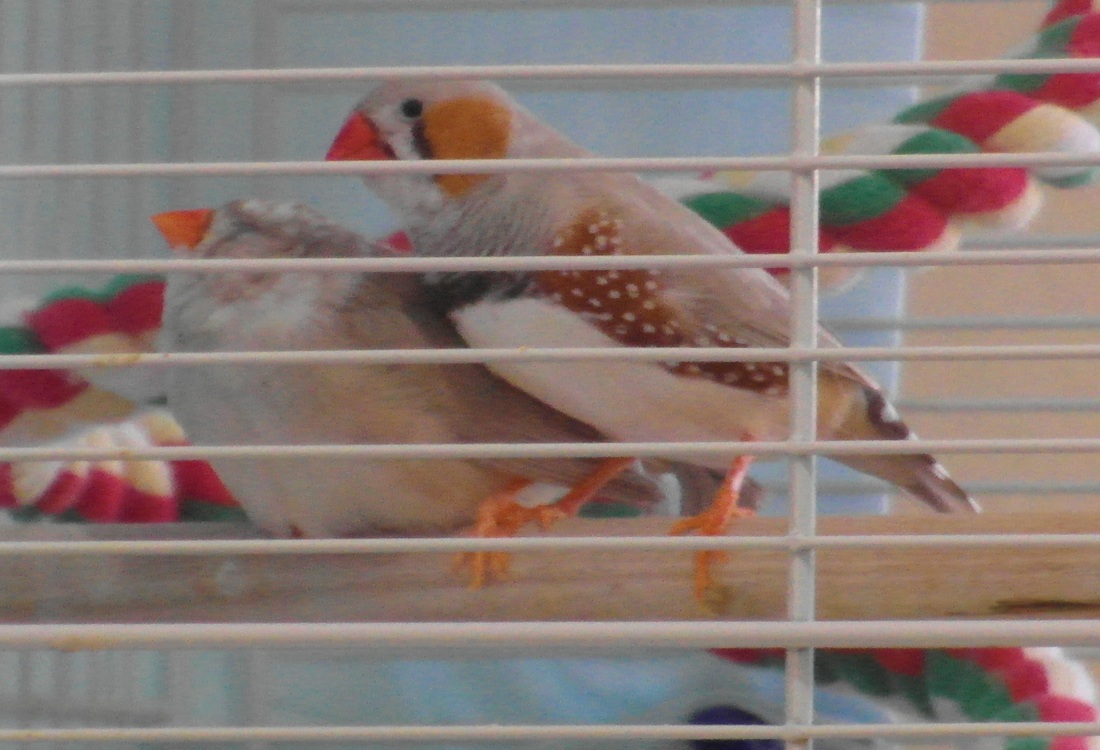
Zebra Finches Preening
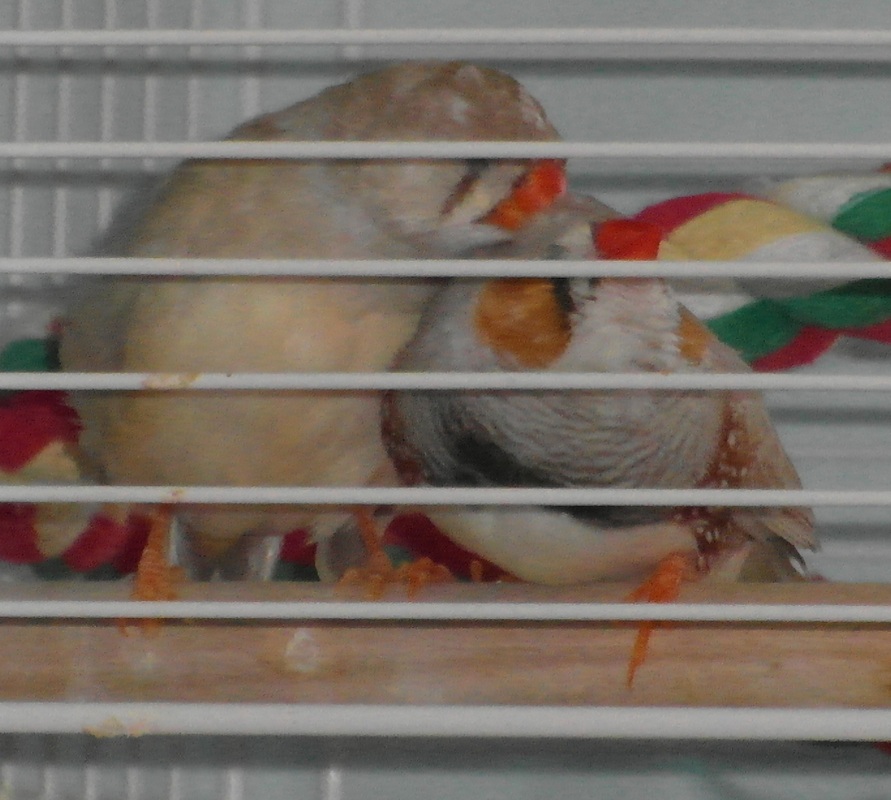
Zebra Finches Preening
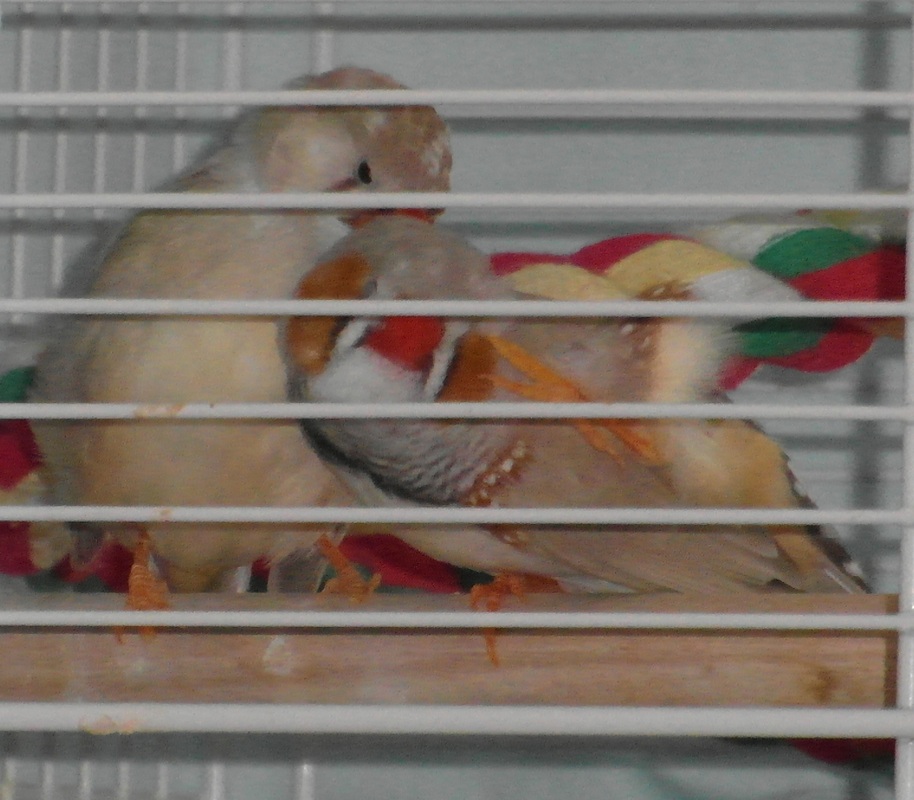
Zebra Finches Preening
|
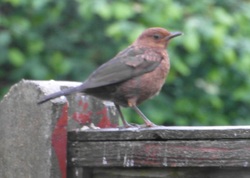 Black Bird fledgling Well on top of all of the wild fledglings that have been looting our garden this year, we have also had a Black Bird fledgling for the first time. At first we did not know what it was, because it was so red in colour, but we have seen it since being fed by a female Black Bird.
We have also seen more of the lovely Blue Tit fledglings that came from our Blue Tit nest box.
Additionally, extra photos of our birds eating, have been added to the gallery for this month.
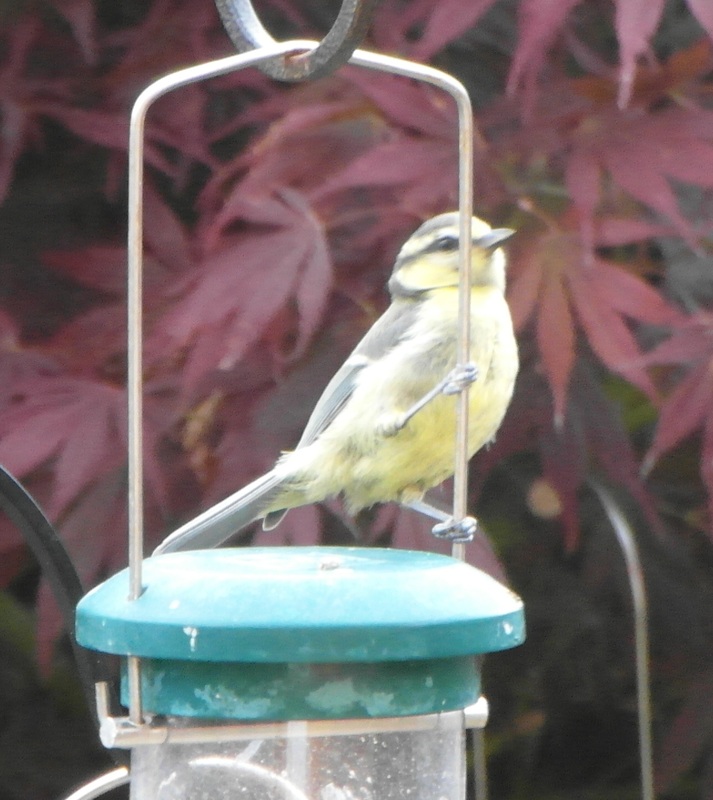 Blue Tit fledgling | 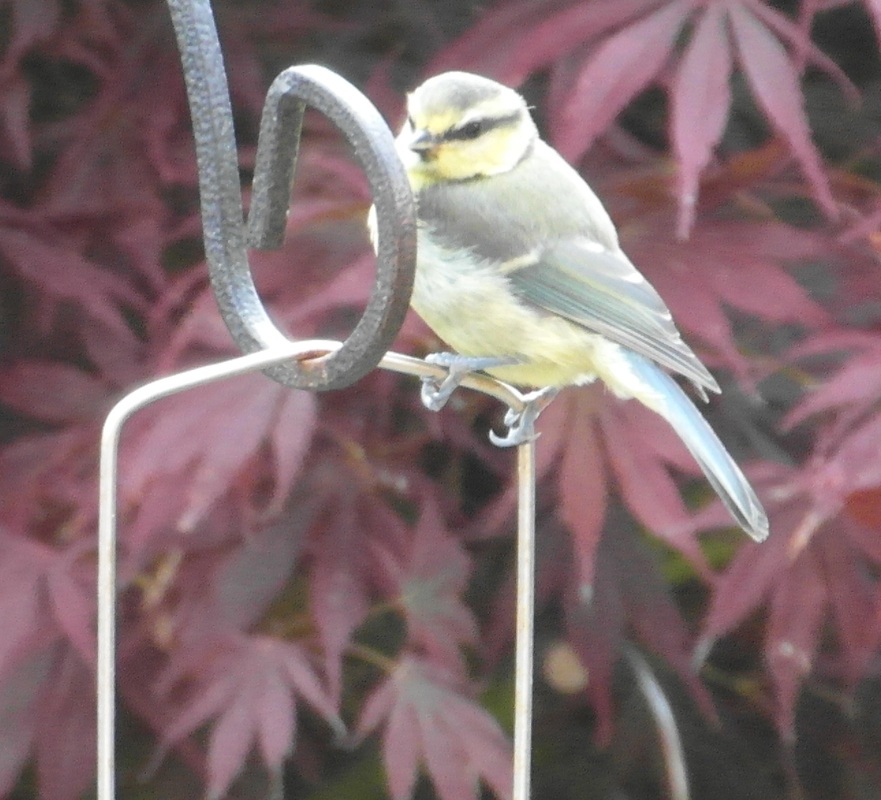 Blue Tit fledgling |
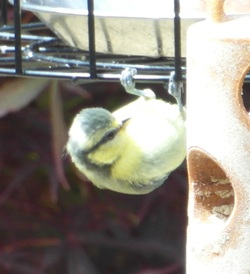 Blue Tit fledgling We had previously mentioned that there was a Blue Tit bird nest at the back of our garden, and that a pair had settled down in it. Well they had chicks and yesterday those chicks fledged. So far we have seen 3 at any one time, but we believe there may be as many as 5 fledglings. They look amazing cute, with their fluffy baby faces and bright lime tinted florescent yellow bellies.
In fact, so far we have had lots of Starling fledglings, a Great Tit fledgling, lots of Sparrow fledglings, a Magpie fledgling, a few Goldfinch fledglings and our new Blue Tit fledglings. As such, we’ve upped the amount of food we supply, and even bought some extra feeders, including a seed feeder for the Sparrows.
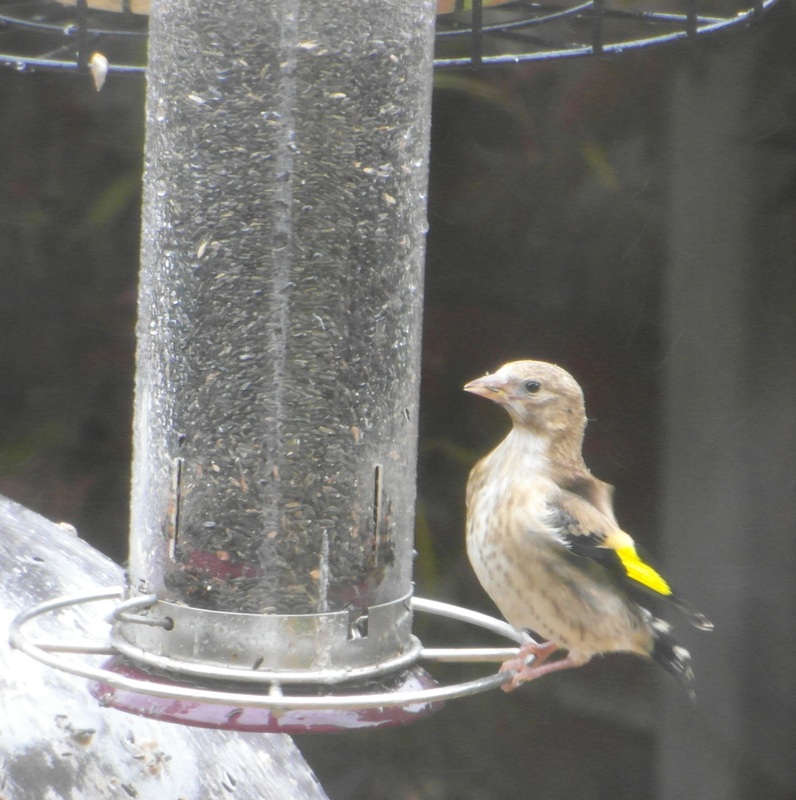
Soggy Goldfinch fledgling
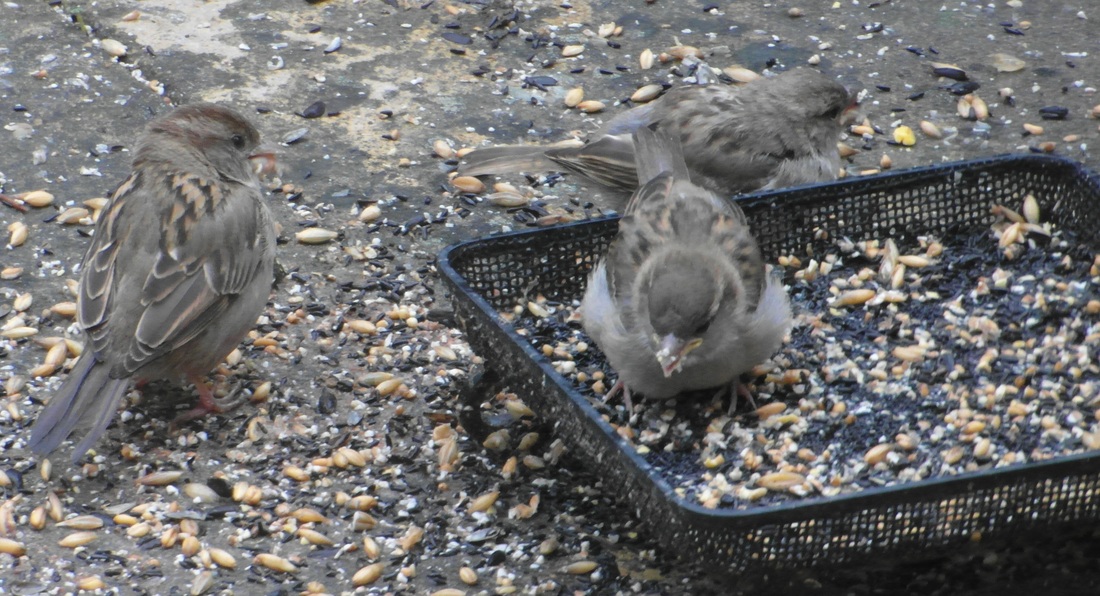
Sparrow fledglings
|
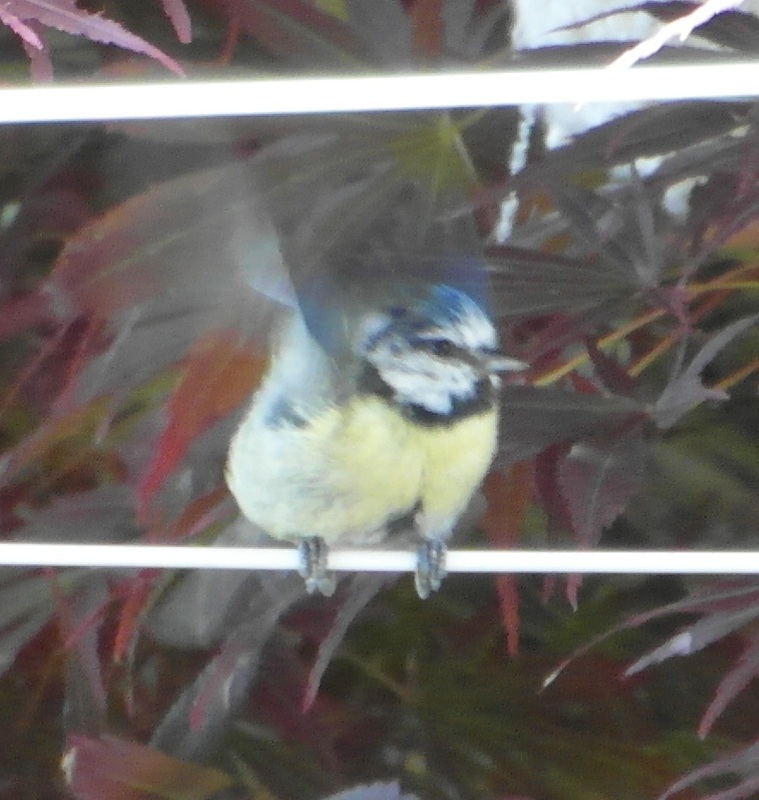
Blue Tit parent
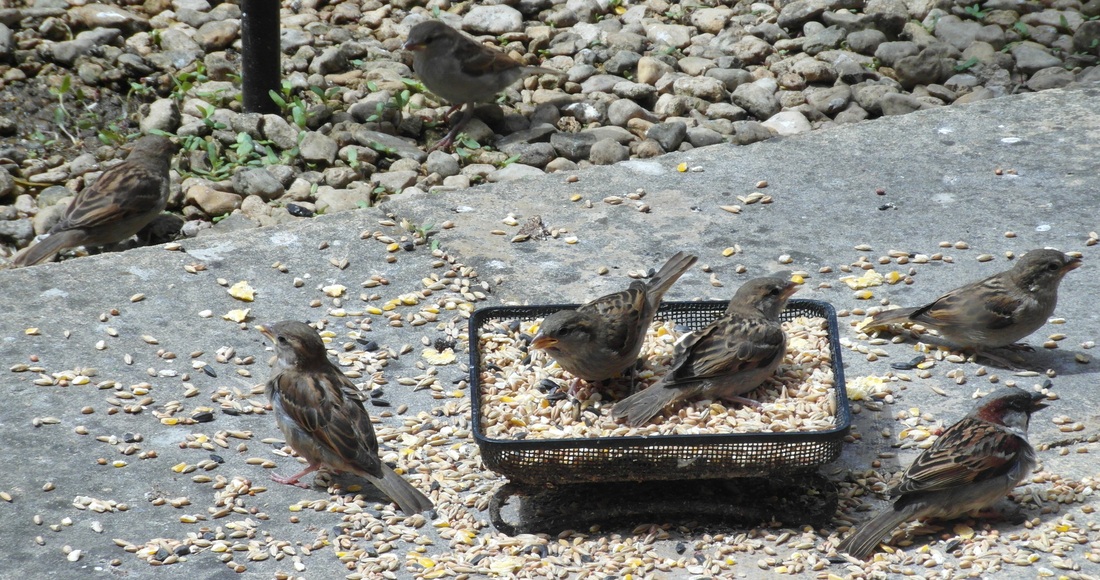
Sparrow fledglings with parent
|
Yesterday Florence became egg bound again. Luckily we were in at the time when it happened, as we saw she had a long trail of egg yolk hanging from her passage, meaning the egg had ruptured inside.
Female birds can become egg bound if they have calcium deficiency, and being egg bound can quick easily have deadly consequences. We phoned our local vet (as anti-biotics for birds cannot be bought in the UK) and got her on a week course of anti-biotics, calcium water and egg feed daily to help her cope. We also have a heat lamp set up to keep her warm.
So far, she seems to have got better, but the health of birds can change quite suddenly, so it is important to check on them regularly.
Zebra finches are remarkably different in character to Bengalese and Cherry finches, taking little to no interest in any vegetation we have decorated their cage with in the past. Bengalese and Cherry finches however, seem quite similar in nature. They both take interest in decorative vegetation, and they both seem more agile than Zebra finches. Both the Bengalese and Cherry finches enjoy hanging on vertical objects, and we have witnessed both species eating while hanging upside down! The Cherry finches however, enjoy this vertical hanging more, and their nails grow at a faster rate. Having done a bit of reading, it seemed that this was common for finches that would enjoy and benefit from the presence of reeds. As such, earlier in the week we bought some reeds (bamboo is also safe to use), cleaned them with bird safe disinfectant and anti-mite sprays, bundled them at one end then poked them through the cage. Both the Bengalese and Cherry finches seem to enjoy them, hanging and interacting with them regularly. Today, we expanded this theme by buying a small bamboo plant (clear of pesticides) and placing it in one corner of the cage. Within seconds all of the birds in the cage were next to it in amazement! So far they seem to enjoy it and have not stopped playing with it since it was put in a few hours ago. It should be noted that care is to be taken when introducing live plants to your finches, as quick a lot of plants (stem and/or foliage) is toxic to birds. If you are unsure, please check: http://www.parrot-and-conure-world.com/non-toxic-for-birds.html | |
For finches kept in cages, even if they are longer flight ones like ours (120cm), it is always good to let them fly around freely indoors. However, letting birds outside the cage is also very dangerous, and requires preparation beforehand.
For the last two weeks we have been letting our Zebra finches out of their cage. We used to do this regularly at our previous house and they were usually well behaved, but we have been less willing to do so at our current home, as the front door opens directly into the living room (where the birds are kept).
Before we let them out, we locked the doors and windows, closed all curtains, removed dangerous objects and covered up likely places to get stuck.
When letting birds fly outside their cage, it is always important to let them come out on their own terms. Yes the room is larger than their cage, but their cage is their home and they feel more secure there. Even if they can see entire room from inside their cage, it is still a scary place.
So for the last two weekends, we have opened the cage with the Zebra finches to see if their wanted to get some exercise. Last week Darwin came out and perched on the curtain rail, did not do much for about 30minutes then flew back to the cage. This week, Florence was keen to get some exercise, flying out and back in to the cage in quick rounds multiple times, though this was setting the Cherry finches off in their cage. So we opened the cage with the Cherry finches. Only Cassi came out, flew round the entire room a few times, settled on the Zebra cage before putting himself back.
It is a good thing our finches appear to put themselves back. One of the most dangerous things about letting birds fly around outside their cage, is if you have to catch them to put them back, as a scared finch is a silly finch, and may put less thought into where they are flying...

Florence, our female Zebra finch, considers flying outside her cage
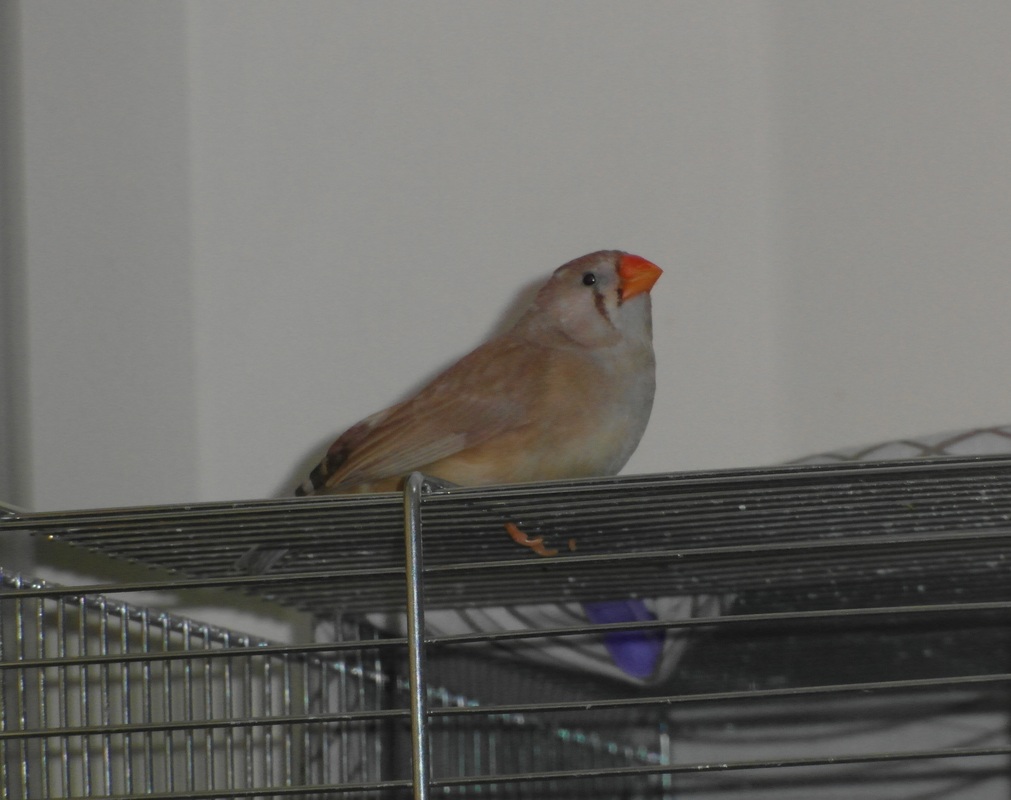
Florence settles on the Cherry finches cage, though not to their amusement
|
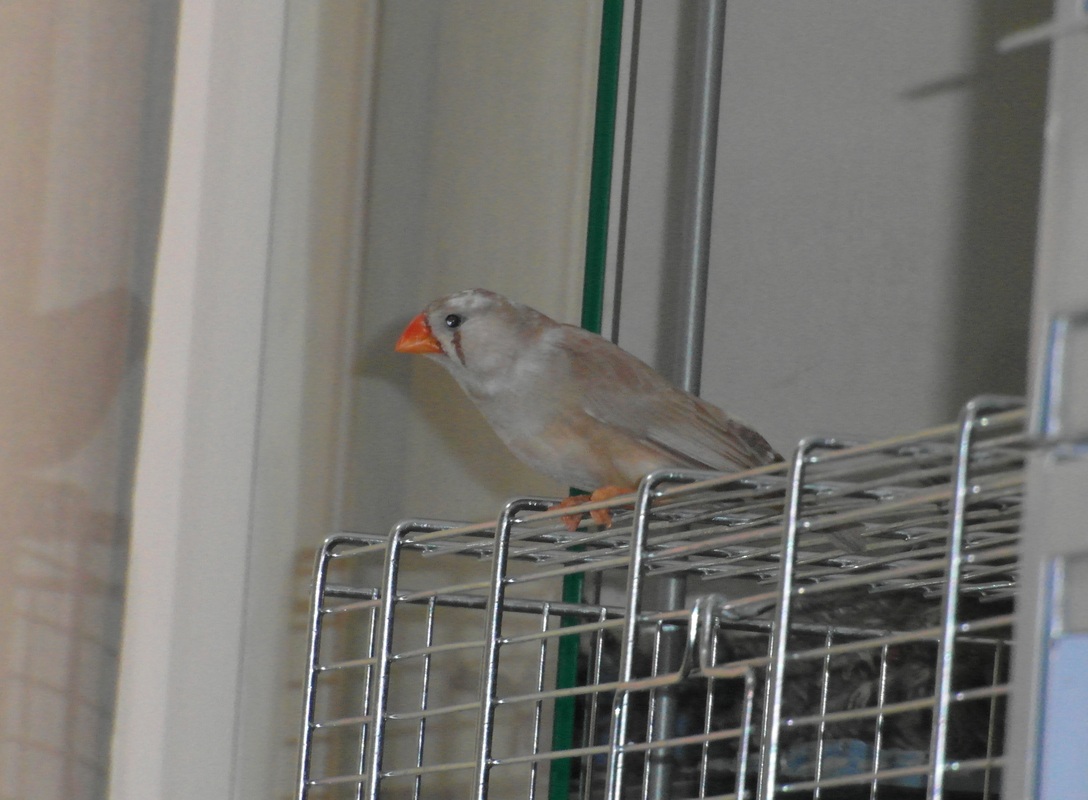
Florence prepares to return home
|
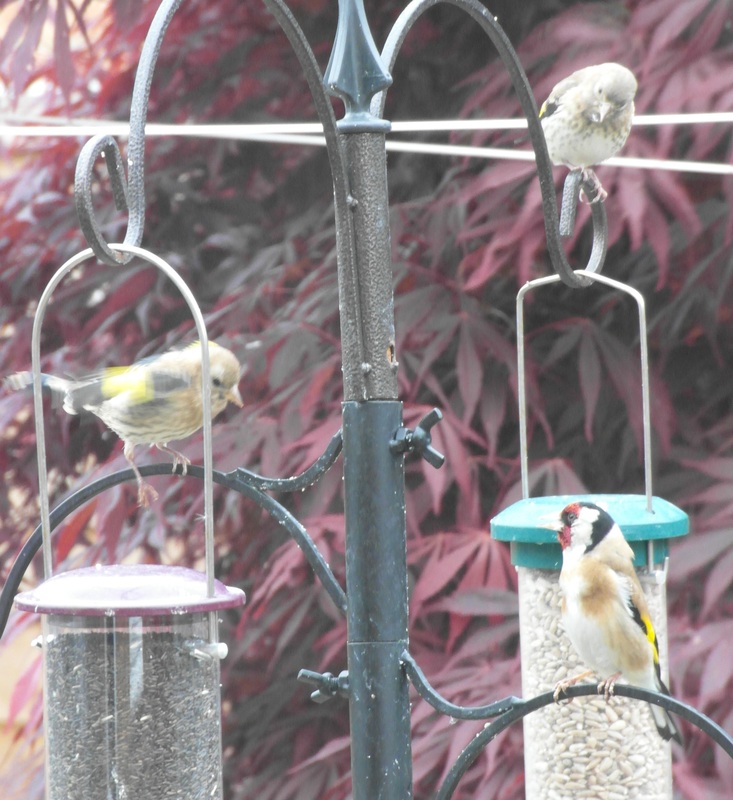
Goldfinch Fledglings with Parent
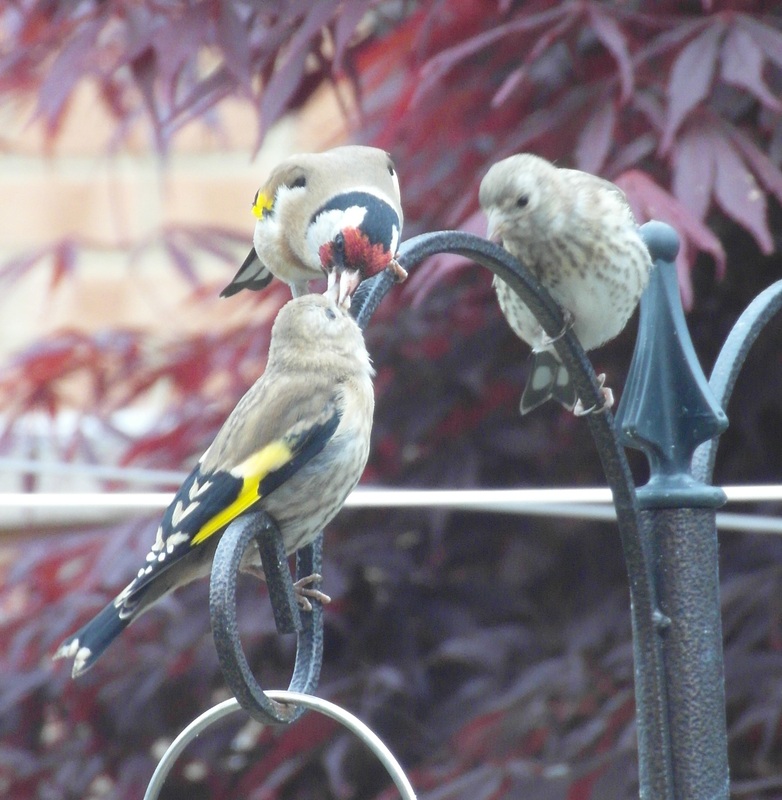
Goldfinch Fledglings being fed
| This post needs no words, other than to say....
GOLDFINCH FLEDGLINGS!!!!
That explains where the sunflower hearts kept going....
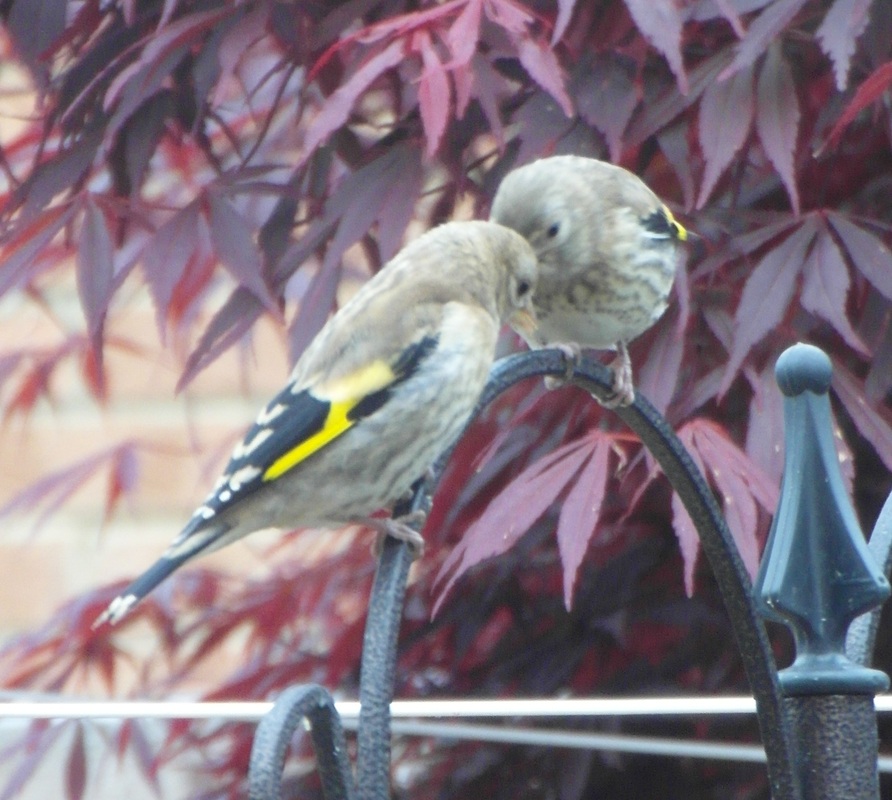
Goldfinch Fledglings

Goldfinch Fledglings being Fed
|
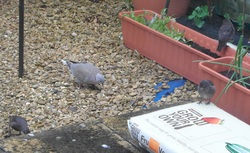 This weekend we were able to buy some extra arms for our bird feeder stand, and now we have a feeder with suet pellets and mealworms, and a feeder with fresh coconut. The suet and mealworm feeder was a big hit and attracked Starlings. However they also brought some fledglings with them (we counted 4 at any one time), which they left in our garden most of the time while they got food from else where.
Also, recently a pair or blue tits have been taking a lot of bedding material into the nest box placed at the back of our garden, so hopefully we will also get blue tit chicks soon as well!
|










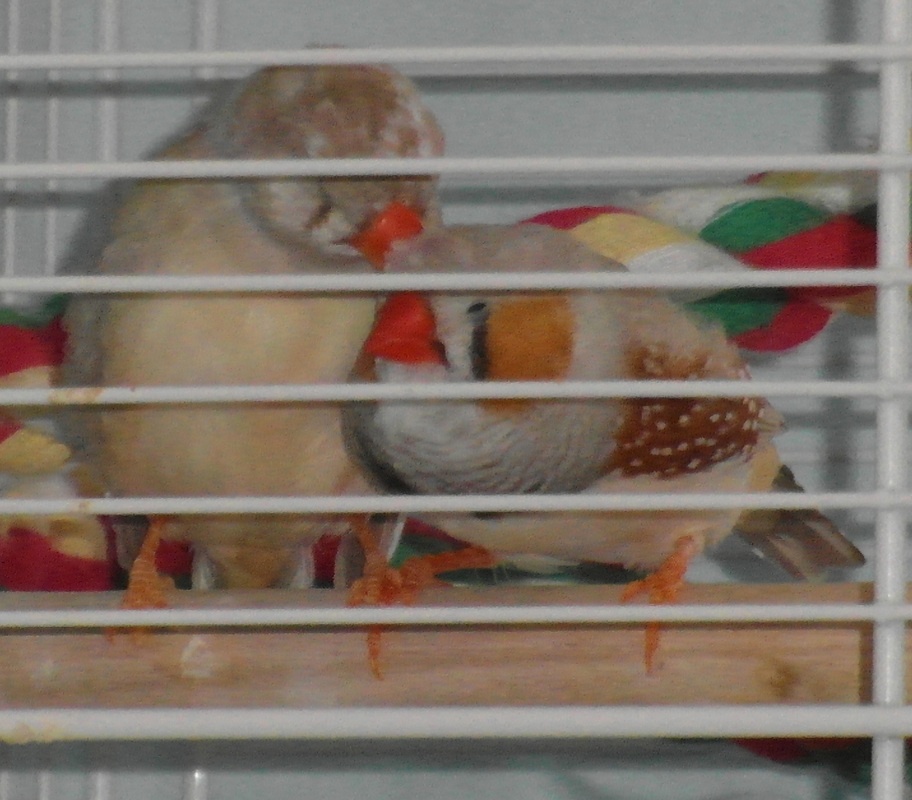








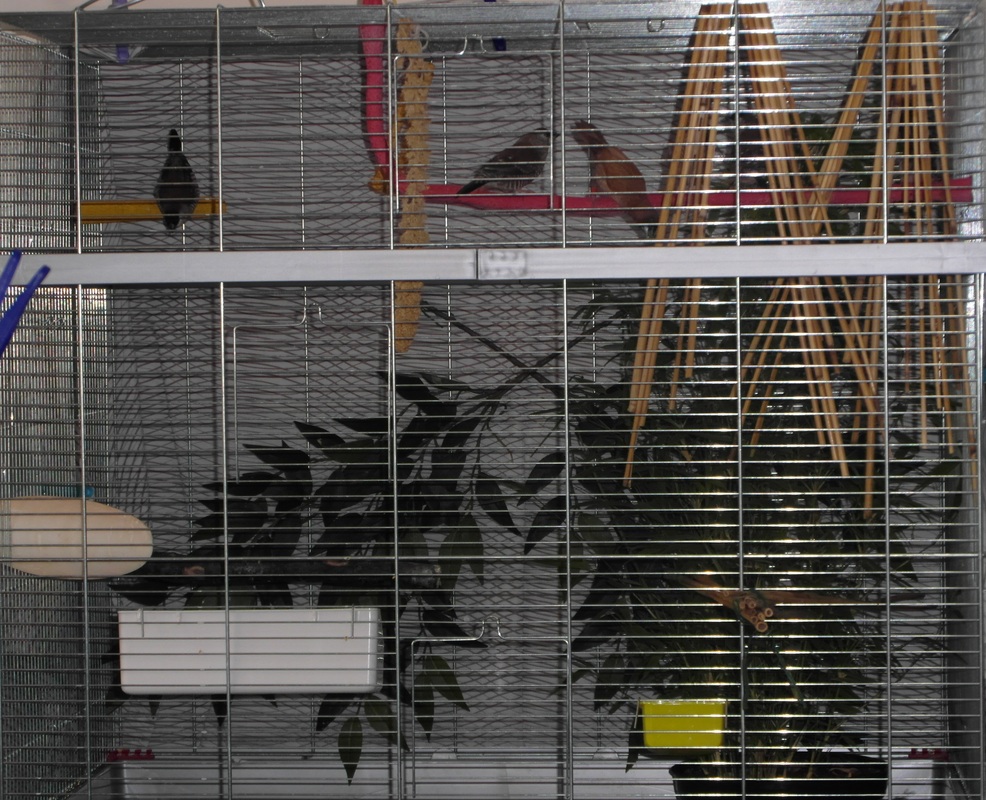
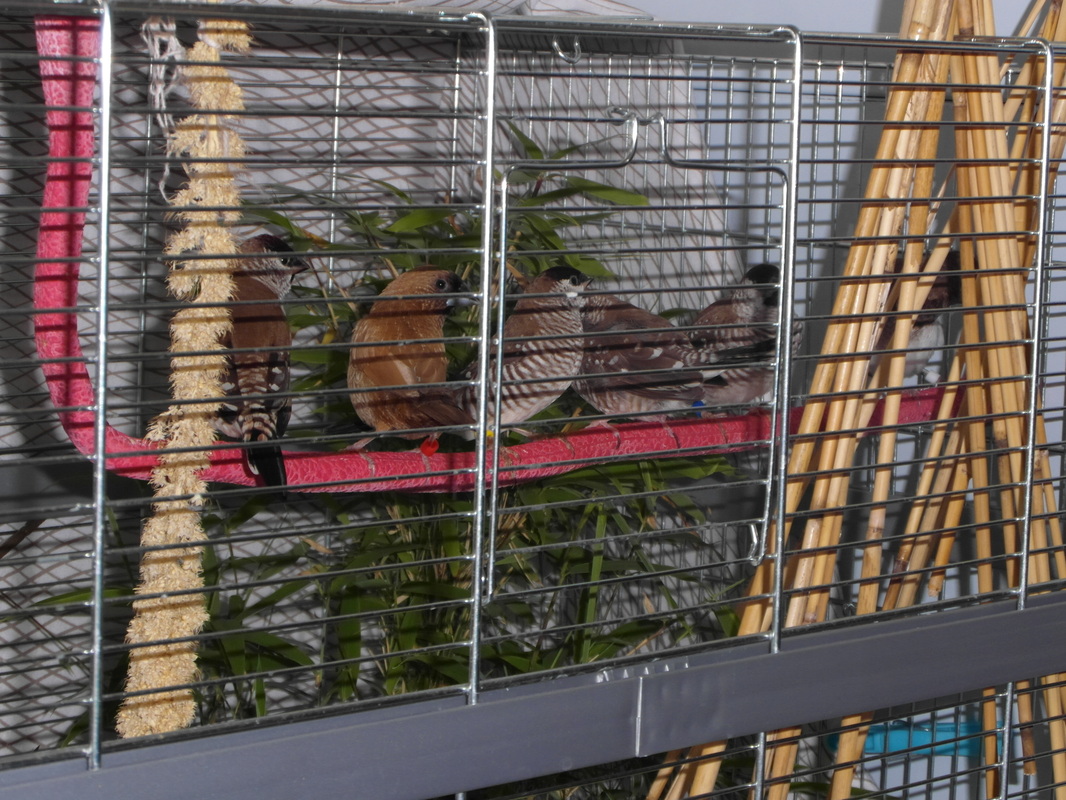








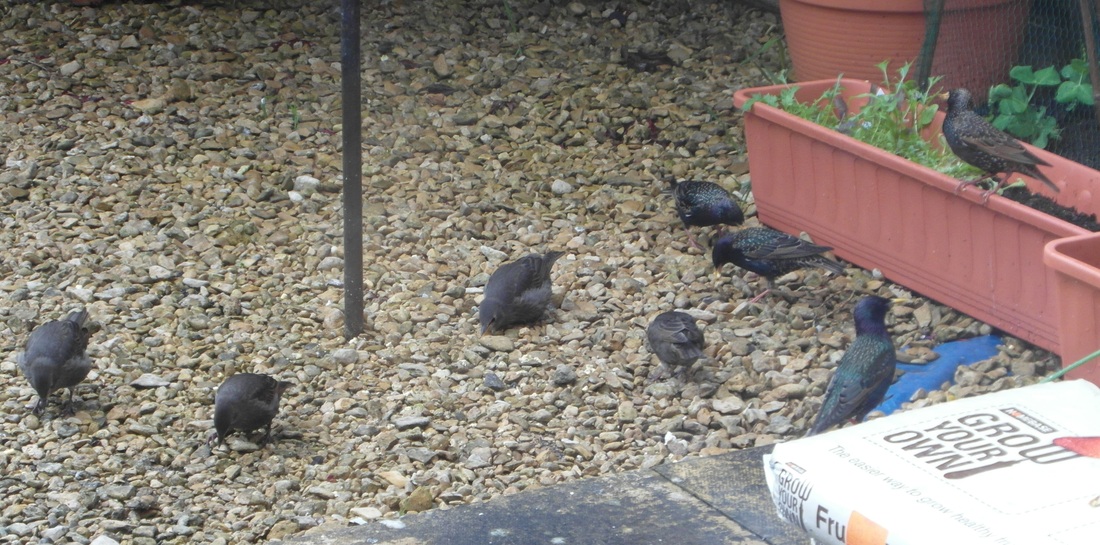
 RSS Feed
RSS Feed